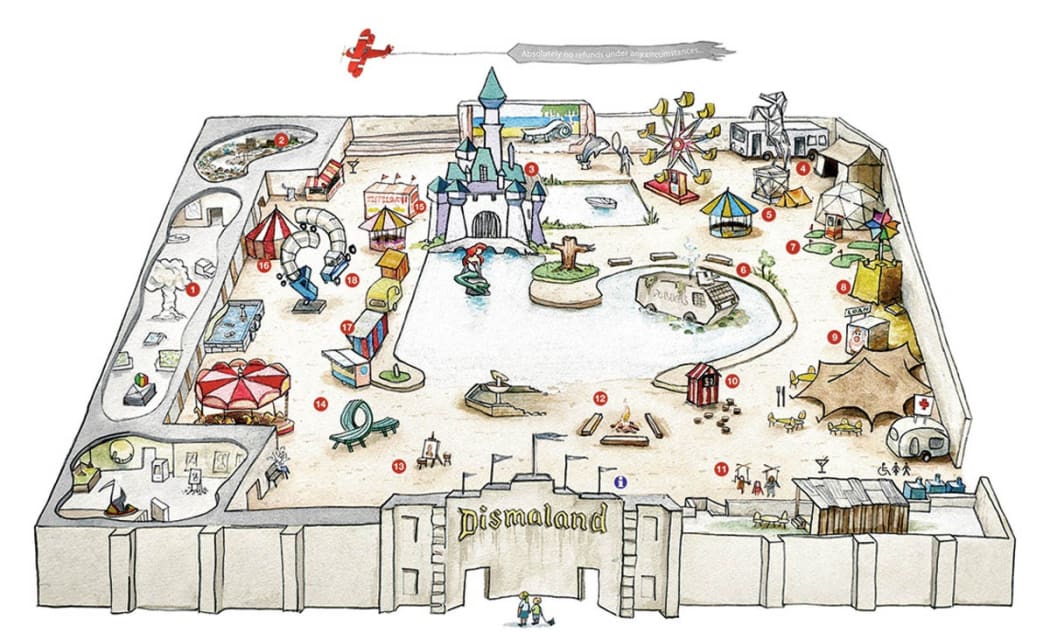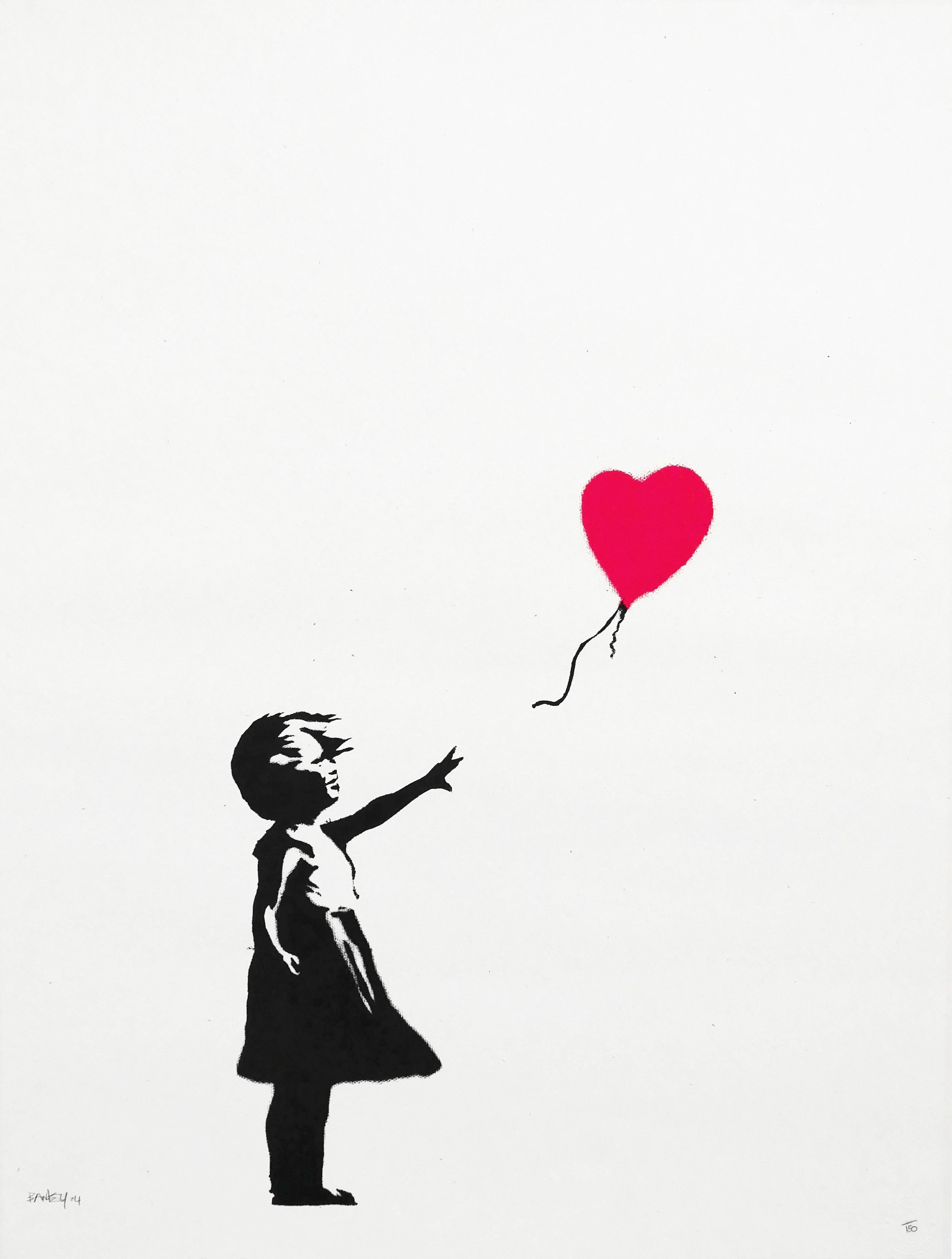
Judging the influence an artist has on popular culture is not an easy task. After all, how do we assess the impact an artist has? Is it their auction results? Is it their popularity? Is it how well-known their motifs are or the critical acclaim they receive? Quite likely, we can say a combination of all of these factors. Banksy himself can firmly fall into the lineage of artists whose impact can be felt within popular culture.
Street Art Goes Mainstream…
Before Banksy, street art in the UK was often dismissed as mere vandalism.We see a similar story taking place many decades ago on the other side of the pond with Keith Haring, Basquiat and the countless pioneers within street art in America. But through his clever use of humour, provocative political messages, and the sheer audacity of where he placed his works (from the West Bank barrier to theme parks), Banksy transformed the perception of street art. Capturing the imagination of the artworld and the public, Banksy’s work seemed to legitimise British street art and took it from the streets to the homes and finally to the auction houses. Contextually, arriving at the start of the 2000’s a changing time in British society - Banksy was able to capture the cultural zeitgeist of the time, endearing himself to, first, the British public and then the wider world.

The Art of Mystery
In an era where celebrities' lives are meticulously documented and shared, Bnksy's choice to remain anonymous has added to his allure. This has created a myriad of conspiracy theories about his true identity, keeping him constantly in the public eye. His anonymity in a hyper-connected age only serves to enhance his legendary status. As with many of Banksy’s seminal stunts, Banksy’s ability to self-publicise has allowed him to transcend the artworld. Many, who may not know much about the artist, know that he chooses to remain anonymous. It is this air of mystery that surrounds Banksy that has ignited the imagination of the world - is he a Robin Hood figure? Perhaps, Veiled behind the mask of anonymity, Banksy is able to freely and openly produce whatever he wants to. Unbound to ego, he is able to confront and challenge societal norms without fear of judgement or a negative reception. In essence, Banksy becomes who we want him to become and who we see him as.
We explore more around Banksy’s anonymity in our article why is Banksy anonymous.
The Commercial and The Anti-Commercial
Banksy’s work often lambasts mindless consumerism, surveillance, and authority. Yet, his art has been co-opted for commercial gain, with reproductions selling on countless products, from t-shirts to posters. This duality – of being both against the system and a part of it – makes Banksy's relationship with popular culture complex and fascinating. Indeed, part of why Banksy has impacted popular culture so much is that his art, whether you are very familiar with it or not, is easy to understand and his themes are universal - resonating with people across the globe.
In The Media...
Banksy directed the 2010 film "Exit Through the Gift Shop," a documentary that tells the story of Thierry Guetta, a French immigrant in Los Angeles, and his obsession with street art. The film itself is an exploration (or perhaps a mockery) of the art world, celebrity, and authenticity. Banksy has embraced his position as the voice of a generation and he is portrayed in the media as a subversive, Robin Hood figure. Indeed, Banksy has been mentioned in a variety of tv shows and films from The Simpsons opening sequence that he directed to a Iron Man 3 - becoming party of the pop culture lexicon.

Banksy's Dismaland & Wider Pranks
In 2015, Banksy opened "Dismaland", a temporary art project in the form of a dystopian theme park. It was described as a "family theme park unsuitable for children." Featuring works from more than 50 artists, Dismaland critiqued the entertainment industry, politics, and the way society operates. The attention it garnered further solidified Banksy's influence in broader popular culture. As discussed, Banksy’s ability to create impactful pranks that gain media attention have further allowed him to penetrate our cultural consciousness. Blurring the line between performance art and vandalism, the artist has created a huge following through his thought provoking and daring activities. From roughly 2003 to 2005 Banksy visited some of the most important and widely respected museums in both the UK and the USA where he secretly placed his own artworks amongst their esteemed collections. Hw famously forged the U.K’s ten pound note which he created for a stunt in which he dropped a suitcase full of the fake tenners into a crowd (which are now used to authenticate Banksy artworks). And, amongst others, set up a pop up in Central Park selling his original artworks.

Read more about Banksy’s most famous pranks.
The Sotheby's Shredding Incident - International Headlines
In a 2018 auction at Sotheby's, just as his "Girl With a Balloon" sold for over £1 million, the artwork began to shred itself, thanks to a remotely activated shredder hidden in the frame. This stunt was both a testament to Banksy's disdain for the art world's commercialism and a masterstroke in maintaining public interest. Cementing his place within art history, the stunt saw Banksy fill the headlines of newspapers across the globe. Just three years later, the shredded work would appear again at auction and become Banksy’s most expensive artwork sold.
Accessibility of Works and Themes
Finally, we have explored how Banksy is part of global pop culture and now it is time for the why. Simple put: great art. Banksy’s skill lies in his ability to condense complex topics and ideas into seemingly simple imagery. Not only are his works easy to understand, thematically Banksy approaches universal themes that speak to people regardless of race, gender, nationality or religion - thus reaching the widest audience possible.Through expertly executed artworks that speak for themselves, Banksy has cemented his legacy within both the artworld and wider popular culture.
Banksy's presence in popular culture is undeniable. From street corners to auction houses, his work and identity have sparked discussions about art's role in society, the nature of celebrity, and the commercialisation of rebellion. Whether you view him as a sell-out or a genius, Banksy's influence on popular culture is a testament to the power of art to challenge, amuse, and inspire.
Explore our collection of Banksy original paintings for sale and contact Andipa via sales@andipa.com or call +44 (0)20 7581 1244.